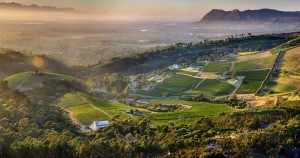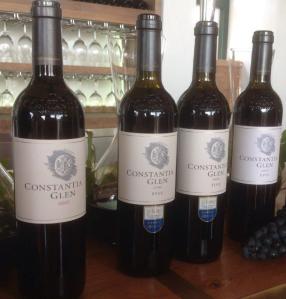Constantia, the name resonates with history and the beginnings of South African wine. It was here, in 1685, Governor of the Cape, Simon van der Stel was granted a very large piece of land but only a small portion, below Constantiaberg, was planted to vines. Much of the rest was grazing land, corn fields and gardens.
Fame for Constantia, the great sweet wine mentioned by both Jane Austen and Charles Dickens and beloved by Napoleon, came in the late 18th and early 19th centuries.
Over the following hundred years, Constantia, as a wine area, fell into neglect with urbanisation an ever-present threat, which it remains to this day. In his book, Wines of the New South Africa, Tradition and Revolution, Tim James suggests several reasons why Constantia survived as a wine region, siting as a crucial element ‘state ownership of Groot Constantia. Without the continuation of this large estate at the centre of the area, strengthened against demand for profitable returns or windfall gains, it would have been virtually impossible to prevent more land being swallowed up in difficult times by the luxurious suburb that presses hard against the vineyards.’

Fast forward to the 1980s, when Duggie Jooste purchased Klein Constantia, the Muellers Buitenverwachting, Dave McCay Constantia Uitsig and JCI Steenberg, that Constantia began its vinous rejuvenation and rapid rise among the Cape’s quality wine areas.
Klein Constantia’s maiden 1986 sauvignon blanc ensured the area’s name was made for this variety; Steenberg’s Sauvignon Blanc Reserve and Buitenverwachting’s Husseys Vlei provided further confirmation. These and whites generally stole the show; the elegant, decidedly medium-bodied reds Neil Ellis created at Groot Constantia in the 1970s, which occasioned Wednesday queues for a one case per customer limit, somehow didn’t manage the transition to the new era. A proviso to that would be ‘with the exception of Buitenverwachting’s Grand Vin’, the Bordeaux-style blend which morphed into Christine in 1991. The problems elsewhere in the valley were of leaf-roll virus, less than ideal vineyard positioning and the less savvy viticulture of the time.
Steenberg changed Constantia’s red wine image, especially with its merlot (admittedly a love-it or hate-it wine with its strong eucalyptus/mint character) but other reds in the range, including unusually nebbiolo, are also good, if with a more New World timbre than colleagues further north in the valley. Better ripeness here has to do, in part, with the vineyards’ lying lower down the slopes, so receiving longer sunlight.
It took a tragedy for Constantia’s red wines to gain greater recognition. One of the great fires of 2000 raced along the top and upper slopes of Constantiaberg, leaving blackened stumps of the pine trees and bare, scorched earth, especially at the northern end of the valley, near Constantia Nek.
The Phoenixes that arose from this sad sight were Eagles’ Nest, Constantia Glen and Beau Constantia. Lying on the lofty and sometimes north facing heights at the north end of Constantiaberg, each of the trio enjoys the late rays of the afternoon sun; ideal for ripening red grapes.
The proof has been seen in Eagles’ Nest Syrah and Merlot, two wines which reflect both modern features of ripe tannins and freshness with the elegant restraint of those old Groot Constantia reds and Buitenverwachting’s Christine.

Now there’s Constantia Glen, neighbour to both Eagles’ Nest and Beau Constantia. I say ‘now’, as after a less than certain start, with pricing, name and release-date changes, the team has found a course that most comfortably fits them and their wines. The first flagship Bordeaux-style blend, merlot-led 2007, labelled Constantia Glen was released as a too young, two-year-old. The latest vintage, 2009, released last week under the Constantia Glen Five label (for the five varieties in the blend), is far more settled as a five-year-old and good value for its R270. Significantly, petit verdot is the major player, making up 40% of the blend, merlot 25%, cab franc and malbec nearly equal, with just a 3% splash of cabernet sauvignon; the whole balanced and harmonious; restraint still evident even with its great breadth of flavour woven into its silky flesh. Freshness and that finishing clip of fine resistance provide the sort of precision French consultant, Dominique Hebrard told me is his end goal, when I tasted the components and potential blend with him some years ago. Whether that blend made it through the demanding scrutiny of the Constantia Glen team, (including our hosts at the launch, co-owner Gus Allen and winemaker, Justin van Wyk), I can do no better than sum it up as I did after that initial tasting: a wine of classic elegance that is pure Constantia.
It’s a pity that, as good as the area’s white wines are, the reds don’t receive as much publicity. Here’s a marketing opportunity for a winter show along the lines of Constantia Fresh, the summer show held at Buitenverwachting, but confined to Constantia red wines of origin. Surely something that would benefit winelovers and Constantia alike.